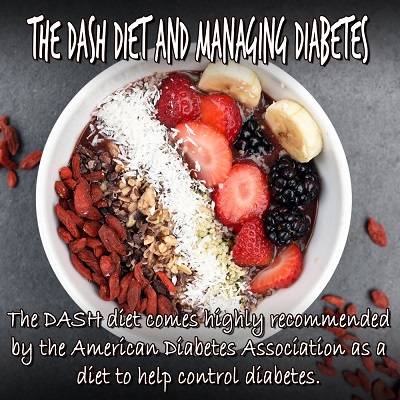 The DASH diet stands for Dietary Approaches to Stop Hypertension. This diet has been shown to lower blood pressure and help to prevent stroke, heart disease, certain forms of cancer and diabetes.
The DASH diet stands for Dietary Approaches to Stop Hypertension. This diet has been shown to lower blood pressure and help to prevent stroke, heart disease, certain forms of cancer and diabetes.
The diet’s main focus is to eat more fresh fruits and vegetables and cut down on sweet, salty and fatty foods as it is based around foods high in calcium, potassium, magnesium, antioxidants and dietary fibers.
The DASH diet has been confirmed to improve many issues associated with diabetes including insulin resistance, hyperlipidemia (high cholesterol) and obesity.
It comes highly recommended by the American Diabetes Association as a diet to help control diabetes.
DASH Diet a Safe Diet for Diabetics
The DASH diet is used widely over America and Canada and is said to be perfectly safe as well as one of the best diets to help manage diabetes. Whilst it is not well known in other parts of the world it has been placed as one of the 3 best diets in the world for diabetics.
DASH follows the following table of foods and servings to help you make the best informed choices on which foods you should be eating. This table is only a guide, it doesn’t show the exact foods you should be eating, just the particular food groups.
For diabetics, it is best to make choices of vegetables that are not starchy (such as potatoes) or only choose to eat them in moderation.
DASH Diet Recommendations
The diet consists of the following servings of foods:
- 6-8 servings of wholegrains per day (i.e. brown rice, pastas, wholegrain bread)
- 4-5 servings of vegetables per day (i.e. pumpkin, sweet potato, broccoli)
- 4-5 servings of fruit per day (i.e. apple, banana, pear)
- 2-3 servings of fat-free or low-fat dairy (i.e. skim milk, Greek yogurt, cottage cheese)
- 4-5 servings of nuts, seeds, legumes per week (unsalted)
- Less than 6 servings per day of lean meats, poultry and fish
- Less than 5 servings per week of sweets
- 2-3 servings per day of fats and oils
This may seem very generous, but the recommended serving sizes are small. For example, a meat, fish or poultry serve may only be 1 ounce.
Serving Sizes
The examples of serving sizes are as follows:
- Whole grains – 1 slice bread, ½ cup cooked pasta, rice
- Fruits – ½ cup fresh juice, 1 med piece of fruit, ¼ cup dried fruit
- Vegetables – ½ cup cooked vegetables, 1 cup leafy greens
- Dairy – 1 cup low-fat milk or yogurt, 2 cups cottage cheese
- Meats/poultry/fish – 70g-100g of meats
- Lentils/beans – ½ cup beans, lentils, peas
- Nuts/seeds – ¼ cup unsalted nuts, 2 tablespoons seeds, 2 tablespoons peanut butter
- Fats/oils – 1 teaspoon margarine, 1 teaspoon vegetable oil, 1 tablespoon mayonnaise or salad dressing
Replacing several meals per week containing red meats with lentils, fish or other alternative options is also recommended for the diet. Changing to this diet gradually is highly recommended as changing everything at once can cause digestive issues such as bloating and diarrhea.
Gradually add one food group at a time to reduce stress to the digestive system.
Portion sizing is also important when following this diet as a diabetic and some tables do not show the sizing, just the serves of the foods you should be consuming. Portion control plays a large role in diets as a diabetic, as some foods are only allowed in moderation due to the carbohydrate or starch content.
It is important not to leave out certain fruits and vegetables from the diet as all fruits and vegetables contain certain nutrients and natural antioxidants needed for the body. Vegetables containing starch are recommended to only be eaten once a day as too much starch can be bad for a diabetic.
It is important to speak to your health care professional or dietician before changing to any diet, as some cases can be difficult to manage with foods alone.






